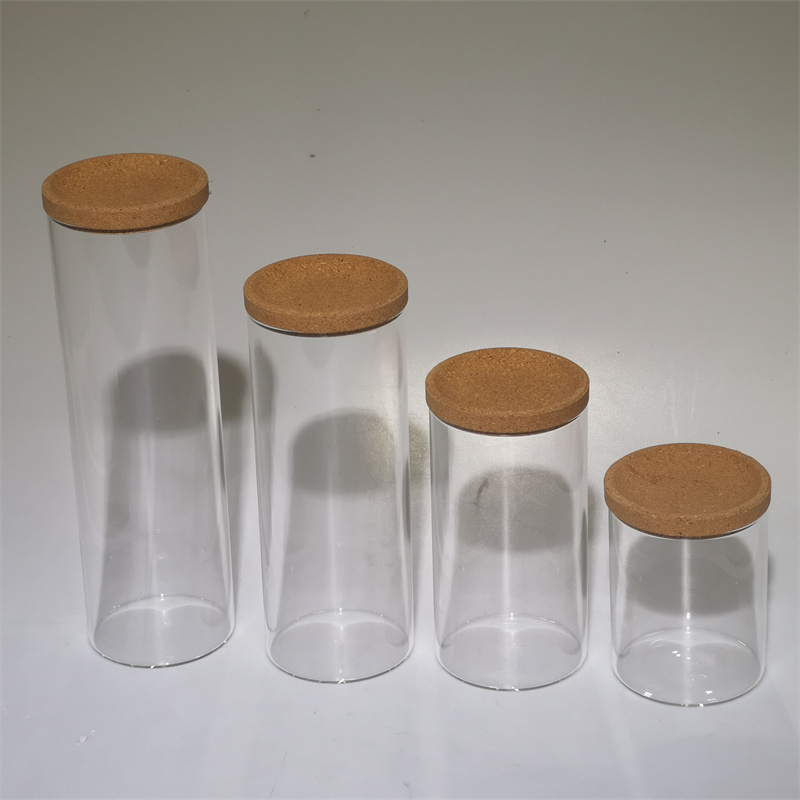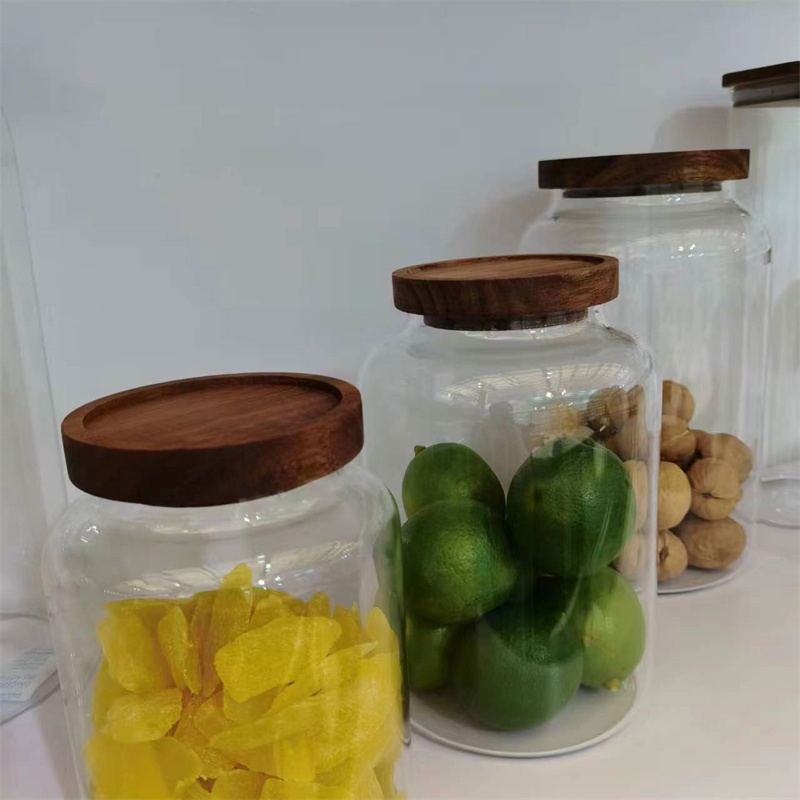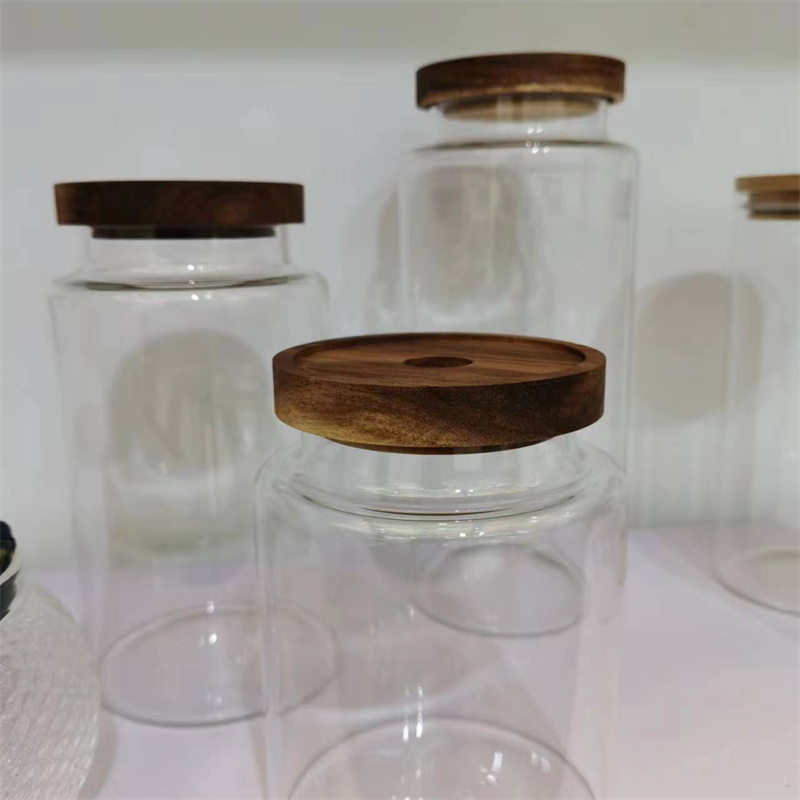High Boronsilicate Glass Food Storage Jar
1. Size: various options
2. Capacity: various options
3. High temperature resistance, insect and moisture resistance
4.Large bottle opening
5.The bottom is flat with even thickness
6.Plain Pattern
High borosilicate glass food storage jars offer a superior solution for safe, durable, and aesthetic food containment. Engineered to withstand extreme temperatures, chemical exposure, and mechanical wear, these jars are widely used in both domestic kitchens and commercial food service settings.
This article explores the material properties, functional benefits, standards compliance, and design principles behind high borosilicate glass food jars—helping buyers, manufacturers, and engineers make informed decisions.
Table of Contents
What Is High Borosilicate Glass?
Advantages Over Soda-Lime Glass
Technical Specifications of Storage Jars
Common Applications and Use Scenarios
Food Safety Standards and Compliance
Material Engineering and Design Considerations
Maintenance and Safe Usage
Frequently Asked Questions (FAQs)
Conclusion and Call to Action
1. What Is High Borosilicate Glass?
High borosilicate glass is a type of specialty glass composed primarily of silicon dioxide (SiO₂) and boron trioxide (B₂O₃). It contains ≥12.5% B₂O₃, which dramatically improves its thermal expansion characteristics, making it resistant to thermal shock.
This material is chemically stable, non-porous, and inert—qualities that make it ideal for food contact applications, laboratory glassware, and high-end cookware.
2. Advantages Over Soda-Lime Glass
| Property | High Borosilicate Glass | Soda-Lime Glass |
|---|---|---|
| Thermal Expansion Coefficient | ~3.3 × 10⁻⁶ /K | ~9.0 × 10⁻⁶ /K |
| Maximum Operating Temperature | ≥ 400°C | ≤ 120°C |
| Thermal Shock Resistance | Excellent (up to 150°C delta) | Poor |
| Chemical Resistance | Strong acids, alkalis | Limited (etching risk) |
| Dishwasher/Oven Safe | Yes | Limited |
3. Technical Specifications of Food Storage Jars
Common Design Features:
Material: High borosilicate glass (SiO₂ ~80%, B₂O₃ ≥12.5%)
Lid Options: Bamboo, PP (polypropylene), glass, silicone-sealed
Capacities: 250 ml to 2000 ml
Tolerance: Temperature range -20°C to 400°C
Closure: Airtight seal (often silicone or food-grade rubber gasket)
Transparency: 90–92% visible light transmission
Thermal Properties:
Softening Point: ~820°C
Strain Point: ~500°C
Annealing Point: ~560°C
Compliance Labels:
BPA-free
LFGB / FDA certified
Dishwasher, microwave, and oven safe
⚠️ Note: While the glass body is oven-safe, lids (especially bamboo or plastic types) must be removed before heating.
4. Common Applications and Use Scenarios
High borosilicate glass jars are versatile and can be used in both domestic and commercial environments:
Household Use:
Dry storage: rice, pasta, grains, coffee, flour
Refrigerated leftovers
Pantry organization
Fermentation vessels (e.g., kimchi, pickles)
Commercial/Foodservice Use:
Transparent food display
Portion-controlled meal prep
Premium packaging for organic goods
Café and bakery ingredient storage
Specialty Uses:
Sous vide prep (due to heat resistance)
Laboratory or pharmaceutical food-grade packaging
Custom branding for high-end food product lines
5. Food Safety Standards and Compliance
A high-quality borosilicate glass food jar must conform to international food-contact material regulations, including:
| Standard / Regulation | Description |
|---|---|
| FDA 21 CFR 177.1520 | U.S. food contact material compliance |
| LFGB (Germany) | Food-safe compliance for consumer goods |
| EU Regulation 1935/2004/EC | Materials intended to contact food |
| RoHS / REACH | Free from heavy metals and harmful chemicals |
| GB 4806.5-2016 (China) | National standard for food contact glass products |
6. Material Engineering and Design Considerations
When selecting or designing high borosilicate glass jars, consider:
Glass Thickness:
Typically 2.5 mm to 4.5 mm
Thicker walls = better durability but more weight
Lid Materials:
Bamboo lids: Sustainable, aesthetic, but prone to mold if wet
PP lids: Food-safe, practical, and reusable
Glass lids with silicone rings: Ideal for all-glass, chemical-free packaging
Gasket Seal:
Should be FDA-grade silicone or thermoplastic elastomer (TPE)
Must maintain seal after repeated washing and thermal cycles
Stackability:
Cylindrical or square jars designed with nesting ability for pantry optimization
7. Maintenance and Safe Usage
To extend the lifespan of borosilicate glass jars:
Avoid sudden thermal shocks (e.g., moving from freezer to oven)
Do not use on open flame or induction stove
Clean with non-abrasive sponges
Dishwasher-safe, but hand-washing recommended for bamboo lids
Store dry; ensure gaskets are clean and mold-free
8. Frequently Asked Questions (FAQs)
Q1: Can borosilicate glass jars go directly from fridge to microwave?
Yes, provided the temperature change is not too rapid (≤150°C delta). Always remove the lid.
Q2: Are they better than plastic containers?
Yes—for chemical stability, longevity, and hygiene, borosilicate jars are superior. They are non-reactive and do not leach under heat or acid.
Q3: Do the jars contain lead or BPA?
High-quality jars are 100% lead-free and BPA-free. Always verify with certification documents.
Q4: Is the seal airtight and leakproof?
Depends on the lid type. Glass or PP lids with silicone rings typically offer airtight performance, but bamboo lids may allow limited airflow.
Q5: Can they be used for vacuum sealing?
Some models are compatible with manual vacuum sealers, especially when equipped with special valves or silicone seals.
9. Conclusion and Call to Action
High borosilicate glass food storage jars offer unmatched performance in food safety, visual appeal, and mechanical integrity. Whether you’re a retailer, manufacturer, or end-user, they are the ideal sustainable alternative to plastic or soda-lime glass containers.
Engineered to resist heat, corrosion, and mechanical stress, these jars meet or exceed FDA, LFGB, and EU food-contact standards—making them the go-to solution for modern kitchens and high-end product packaging.








